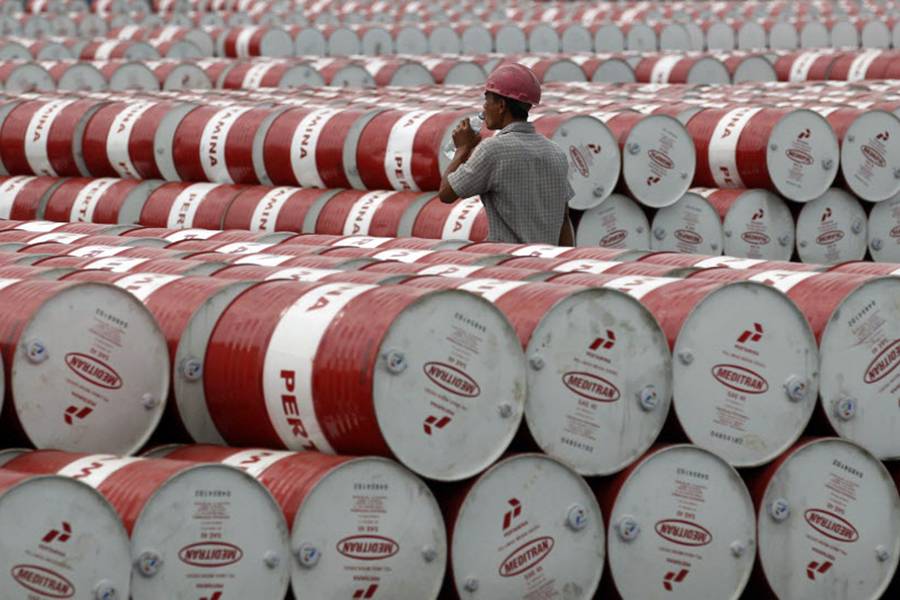How long can we expect low oil prices?
Loading...
Crude oil prices are likely to bottom out in the first half of 2015, until a possible slowdown in U.S. shale production counters a supply glut exacerbated by OPEC's decision not to cut output, a Reuters monthly survey showed.
The Organization of the Petroleum Exporting Countries' agreement last month to stand pat on output meant the onus for any supply cutbacks was now on non-OPEC producers, primarily led by U.S. shale oil, analysts said.
"Oil prices will be lower, making shale oil production less attractive for investments, which are necessary to keep shale oil production growing," Commerzbank's Carsten Fritsch said.
Oil is seen recovering in the second half as non-OPEC production responds to lower prices, while demand picks up in the course of the year, the poll showed.
The survey of 30 economists and analysts projected Brent to average $74.00 a barrel next year and $80.30 in 2016.
The forecast for 2015 is $8.50 below the average projection in the previous Reuters poll. The November poll number was down $11.20 from October, marking the biggest downgrade in average forecasts since the 2008 economic downturn.
Brent this month hit five-year lows below $60 a barrel, down almost half from peaks reached in June. Brent has averaged $100.57 so far this year.
Brent was up 74 cents at $62.12 on Monday. U.S. crude was up 66 cents at $57.79 a barrel.
"In terms of the floor price, we think $60 per barrel will be the level at which fast-rising U.S. shale oil producers will feel the pinch," ANZ analyst Natalie Rampono said.
"Supply cuts above this level will be limited to other smaller, high-cost U.S. and Canadian unconventional oilproducers. Although we think it will take six to 12 months for these supply cuts to become apparent," she added.
Some analysts, however, were skeptical whether OPEC's stand would serve as a deterrent to U.S. shale oilproducers.
"The lag in oil production response from existing wells from the U.S. suggests that only the marginal oil projects will be discouraged at this stage," Vyanne Lai of National Australia Bank said.
The poll forecast U.S. light crude would average $68.70 a barrel next year, and $74.90 in 2016. U.S. crude has averaged $93.99 so far in 2014.
"Some of the highly leveraged U.S. shale oil producers will face serious trouble. In the long term, OPEC strategy should pay off for OPEC as this strategy should lead to higher oil prices from 2016/17 on," Hannes Loacker of Raiffeisen Bank said.
Raiffeisen is among the most bullish forecasters, projecting Brent to average $80 a barrel in 2015, and is one of 11 institutions that had participated in the previous poll and retained their outlook since then.
Of the 14 banks polled that have cut their forecasts since the previous month's survey, Morgan Stanley slashed its projection by $28 to an average 2015 Brent price of $70.
ANZ, Bank of America Merrill Lynch, JBC, LBBW and Deutsche Bank also lowered their North Sea crude forecast for next year by more than $15 per barrel.
ABN AMRO had the highest Brent forecast at $85 for 2015, while Nomisma Energia had the lowest at $59 a barrel.
Brent's premium <CL-LCO1=R> to U.S. crude will narrow to $5.30 a barrel in 2015 from $6.68 so far this year and $10.58 in 2013, the poll said.







